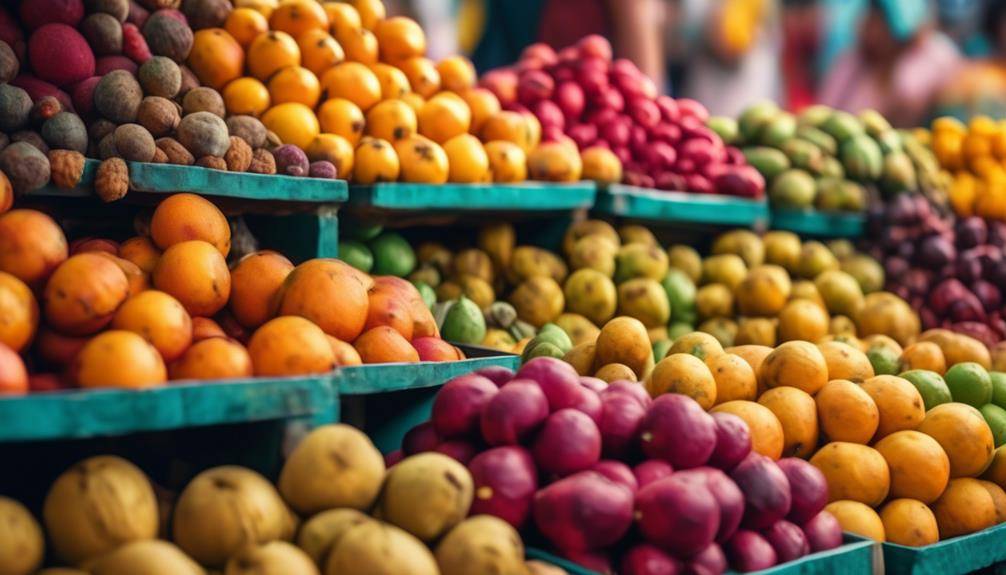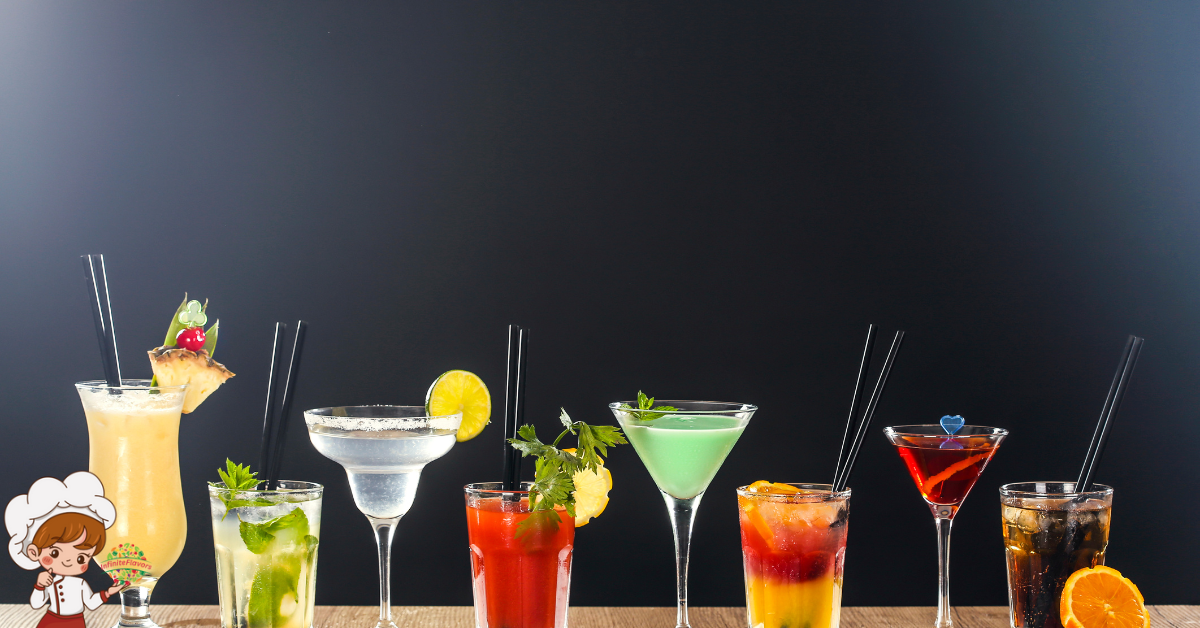How To: Unlocking Danish Pastry Baking Secrets

Unlocking Danish Pastry Baking Secrets is like discovering the hidden treasure chest of the baking world. With each bite, you embark on a culinary adventure, where layers of flaky dough and sweet fillings intertwine to create a symphony of flavors. But how can you achieve that perfect balance of crispiness and tenderness, that melt-in-your-mouth experience? Fear not, for within these pages you will uncover the top techniques that will elevate your Danish pastry game to a whole new level. So, get ready to embark on a journey that will transform your baking skills and leave your taste buds craving for more.
The Importance of Quality Ingredients
Using high-quality ingredients is crucial in achieving the best results when baking Danish pastries. The quality of the ingredients you use directly affects the taste and texture of the final product. When it comes to Danish pastries, it’s all about finding the perfect balance between quality and quantity.
Sourcing ingredients for your Danish pastry recipe requires careful consideration. Start with the flour, which forms the foundation of any pastry. Look for high-quality, finely milled flour with a low protein content. This will ensure a tender and flaky texture in your pastries. Avoid using all-purpose flour, as it may result in a dense and tough pastry.
Next, focus on the butter. Danish pastries are known for their rich and buttery flavor, so it’s important to use high-quality butter. Look for unsalted butter made from fresh cream. European-style butter is often preferred due to its higher fat content, which contributes to a more luxurious taste and texture.
When it comes to sourcing other ingredients like sugar, eggs, and yeast, opt for the best quality available. Using organic or natural sugars can enhance the flavor of your pastries, while fresh and free-range eggs add richness and a vibrant color. Fresh yeast, rather than dry yeast, will give your pastries a better rise and a more complex flavor profile.
Proper Dough Mixing Techniques
To ensure the perfect texture and rise in your Danish pastries, it is essential to master proper dough mixing techniques. Achieving the right dough consistency and properly kneading the dough are crucial steps in creating light, flaky, and delicious pastries.
When it comes to dough consistency, you want to aim for a smooth and elastic texture. This can be achieved by adding the right amount of liquid to the dry ingredients gradually. Start by mixing the flour, sugar, salt, and yeast together in a large mixing bowl. Then, slowly pour in the liquid ingredients, such as milk and eggs, while stirring continuously. This gradual addition of liquids helps in achieving the desired dough consistency. If the dough feels too dry, add a little more liquid, and if it feels too sticky, add a little more flour.
Once the dough is mixed, it’s time to knead it. Kneading helps develop the gluten in the dough, which gives the pastries their structure and elasticity. Place the dough onto a lightly floured surface and use the heel of your hand to push the dough away from you. Fold the dough back onto itself and repeat this process. The dough should feel smooth and elastic after about 10 minutes of kneading.
Remember to avoid over-kneading the dough, as this can result in tough pastries. When the dough is ready, shape it into a ball and place it in a greased bowl. Cover it with a clean kitchen towel and let it rise in a warm, draft-free area until it doubles in size.
Understanding the Science of Yeast
Now let’s explore the science behind yeast in Danish pastry baking. Firstly, understanding the yeast activation process is crucial for successful dough rising. Secondly, familiarizing yourself with the different stages of yeast fermentation will help you achieve the desired texture and flavor in your pastries. Lastly, it’s important to recognize the significant impact yeast has on the final texture of your Danish pastry. Let’s delve into these points to enhance your understanding of the science of yeast.
Yeast Activation Process
Understanding the science of yeast is crucial for mastering the yeast activation process in Danish pastry baking. To help you become a yeast activation pro, here are three key points to keep in mind:
- Yeast Activation Troubleshooting: Sometimes, despite following the instructions, yeast may fail to activate properly. This could be due to old or expired yeast, or using water that is too hot or too cold. To troubleshoot, check the expiration date of your yeast and use water at the correct temperature (around 110°F or 43°C) to activate it.
- Alternative Yeast Activation Methods: If you’re looking for alternative ways to activate yeast, consider using sugar or honey to feed the yeast, or using milk instead of water. These methods can add flavor and richness to your Danish pastries.
- Patience is Key: Yeast activation takes time. Allow the yeast to proof for the designated amount of time mentioned in your recipe, ensuring a successful rise and fluffy texture in your pastries.
Yeast Fermentation Stages
As you continue your journey in mastering the yeast activation process for Danish pastry baking, it is essential to delve into the fascinating world of yeast fermentation stages and gain a deeper understanding of the science behind it. Yeast fermentation is a crucial step in the baking process as it produces carbon dioxide gas and alcohol, which help to leaven and flavor the dough. There are three main stages of yeast fermentation: lag phase, exponential growth phase, and stationary phase. During the lag phase, yeast adapts to its new environment and prepares for growth. In the exponential growth phase, yeast cells rapidly multiply, consuming sugars and releasing carbon dioxide.
Finally, in the stationary phase, the yeast population stabilizes as the nutrients in the dough become depleted. Troubleshooting fermentation involves adjusting factors such as temperature, hydration level, and yeast activation methods to ensure optimal yeast activity and a successful bake.
Yeast’s Impact on Texture
To truly understand the science of yeast and its impact on texture, it is important to delve into the intricate processes that occur during fermentation. Yeast fermentation plays a crucial role in creating the light and airy texture of Danish pastries. Here are three key ways yeast affects the texture of your baked goods:
- Yeast Activation: Before yeast can work its magic, it needs to be activated. This is done by combining the yeast with warm water or milk and a small amount of sugar. The yeast feeds on the sugar, producing carbon dioxide gas as a byproduct. This gas creates bubbles in the dough, resulting in a light and fluffy texture.
- Fermentation: During fermentation, the yeast continues to produce carbon dioxide, causing the dough to rise. This process can take several hours, allowing the dough to develop complex flavors and a tender texture.
- Gluten Development: Yeast fermentation also helps in developing gluten, a protein that gives baked goods structure. As the yeast produces carbon dioxide, it stretches and strengthens the gluten network, giving the dough its characteristic elasticity and chewiness.
Understanding the impact of yeast fermentation on texture is crucial for achieving the perfect Danish pastry.
Mastering the Art of Laminating
What are the key techniques to master when it comes to laminating Danish pastry dough? Laminating techniques are crucial for creating those flaky layers that make Danish pastries so irresistible. To achieve the perfect laminated dough, follow these steps:
- Start with a well-chilled dough: It’s important to work with cold dough to prevent the butter from melting. Chill the dough for at least 30 minutes before beginning the laminating process.
- Roll out the dough evenly: Roll the dough into a rectangular shape, ensuring that it is of an even thickness throughout. This will help to create uniform layers when the dough is folded.
- Add the butter layer: Place a slab of cold butter onto the center of the rolled-out dough. Fold the dough over the butter, completely enclosing it. Press the edges to seal in the butter.
- Perform the first fold: Roll out the dough again, lengthening it this time. Fold the dough into thirds, like a business letter. This creates the first set of layers.
- Repeat the folding process: Rotate the dough 90 degrees and roll it out again. Fold it into thirds once more. This creates even more layers and enhances the flakiness.
- Chill and repeat: After each fold, chill the dough for at least 30 minutes to allow the butter to firm up. Repeat the folding and chilling process two more times, for a total of three folds.
Mastering the art of laminating Danish pastry dough takes practice and precision. By following these techniques, you’ll be well on your way to creating beautifully flaky pastries that will impress your friends and family.
Essential Tips for Proper Dough Handling
To handle Danish pastry dough properly, it is important to follow a few essential tips that will ensure success in creating flaky and delicious pastries. Here are three important tips to help you with proper dough handling:
- Keep it cool: Danish pastry dough can be quite delicate, so it’s essential to keep it cool throughout the handling process. This helps maintain the integrity of the butter layers and prevents it from becoming too soft and sticky. To achieve this, make sure to work in a cool environment, and if necessary, chill your tools and work surface. Additionally, avoid overhandling the dough, as the heat from your hands can warm it up.
- Use proper shaping techniques: Shaping the dough correctly is crucial to achieve the desired flaky texture. When rolling out the dough, always roll from the center outwards in even strokes, applying gentle pressure. This helps distribute the butter evenly and prevents air pockets from forming. When folding the dough, be precise and use a light touch to avoid compressing the layers. Proper shaping techniques will ensure that your pastries rise evenly and have a beautiful, layered appearance.
- Troubleshoot common dough issues: If you encounter any issues with the dough, it’s important to troubleshoot and address them promptly. For example, if the dough becomes too sticky, lightly dust it with flour or refrigerate it for a few minutes to firm it up. If the dough is too dry and crumbly, knead in a small amount of water or milk to bring it together. By troubleshooting common dough issues, you can salvage the dough and achieve the desired results.
Achieving the Perfect Proofing
To achieve the perfect proofing for your Danish pastries, there are three key points you need to consider. First, time and temperature play a crucial role in allowing the dough to rise properly, so make sure to follow the recipe’s instructions carefully. Second, proper dough hydration is essential for achieving the desired texture, so ensure that the dough is adequately moistened. Lastly, don’t overlook the importance of resting the dough at various stages of the proofing process to allow the gluten to relax and create a more tender pastry.
Time and Temperature
Achieving the perfect proofing in Danish pastry baking requires careful attention to time and temperature. To help you master this crucial step, here are three key techniques to keep in mind:
- Temperature control: Maintaining the right temperature is essential for a successful proofing process. Too low, and the dough won’t rise properly; too high, and it may overproof. Use a thermometer to monitor the temperature of your dough and the environment, ensuring they are within the recommended range.
- Proper timing: Each Danish pastry recipe has specific proofing times that you need to follow closely. Underproofed pastries will be dense and lack the desired flakiness, while overproofed ones may collapse during baking. Use a timer to ensure you achieve the perfect proofing time.
- Observation: Pay attention to the visual cues of the dough during proofing. It should increase in volume and become airy and puffy. Additionally, gently poking the dough should leave a slight indentation. These signs indicate that it’s time to move on to the next step of the baking process.
Proper Dough Hydration
Maintaining the proper hydration of your dough is crucial for achieving the perfect proofing in Danish pastry baking, ensuring a light and flaky end result. The consistency of the dough plays a significant role in determining the final texture of your pastries. A well-hydrated dough should have a slightly sticky feel, but it should not be overly wet or dry. Achieving the right dough consistency requires careful measurement of the ingredients and proper mixing techniques. Too much water can make the dough too sticky and difficult to handle, while too little water can result in a dry and tough pastry.
Additionally, the dough’s elasticity is equally important. It should be stretchy and able to hold its shape when rolled out, allowing for easy shaping and layering. By paying attention to dough hydration and elasticity, you can ensure that your Danish pastries turn out perfectly light and flaky every time.
Importance of Resting
Resting the dough is a crucial step in achieving the perfect proofing for Danish pastries, allowing the gluten to relax and the flavors to develop. To fully understand the importance of the resting process, consider the following:
- Gluten Relaxation: Resting allows the gluten strands in the dough to relax and stretch, resulting in a lighter and more tender pastry. This step is essential for creating the desired flaky texture.
- Flavor Development: During the resting process, the dough undergoes fermentation, which enhances the flavor profile of the pastries. The yeast in the dough feeds on the sugars, producing carbon dioxide and alcohol, contributing to a distinct taste.
- Optimal Results: Resting the dough for the recommended time ensures that the yeast has enough time to activate and the dough to rise properly. This leads to a well-proofed pastry, with a delicate crumb and a rich aroma.
Baking and Glazing Techniques for Perfect Danish Pastries
To achieve perfectly baked and beautifully glazed Danish pastries, follow these precise and detailed techniques. When it comes to glazing alternatives for Danish pastries, there are a few options you can consider. One popular choice is using a simple sugar glaze made from powdered sugar and milk or water. This glaze provides a sweet and shiny finish to your pastries. Another option is to use an egg wash, which gives a glossy and golden appearance to the pastry. To make an egg wash, simply whisk together an egg with a little bit of water or milk before brushing it onto the pastries before baking.
Now, let’s move on to troubleshooting common pastry problems. One common issue is a soggy bottom crust. To prevent this, make sure to preheat your oven and place the pastries on a preheated baking sheet or a parchment-lined baking tray. This will ensure that the heat is evenly distributed and will help to create a crisp and flaky crust.
Another problem you might encounter is a collapsed or sunken pastry. This can happen if the pastries are not baked for long enough or if the oven temperature is too low. To avoid this, follow the recipe instructions for baking time and temperature and make sure your oven is properly calibrated. Additionally, be sure not to overfill the pastries with filling, as this can also cause them to collapse.
Unlocking Danish Pastry Baking Secrets; Frequently Asked Questions
How Long Should I Proof the Danish Pastry Dough?
You should proof the Danish pastry dough for about 1 to 2 hours. This allows the yeast to ferment and the dough to rise, resulting in a light and flaky texture. To achieve the best results, cover the dough and let it proof in a warm, draft-free area.
What Is the Best Type of Yeast to Use for Danish Pastries?
The best yeast brand to use for Danish pastries is Fleischmann’s. However, if you’re looking for yeast alternatives, you can try using instant yeast or active dry yeast. Both options work well in creating delicious pastries.
Can I Substitute All-Purpose Flour for Bread Flour in the Dough Recipe?
Yes, you can substitute all-purpose flour for bread flour in the dough recipe for Danish pastries. However, keep in mind that bread flour has a higher protein content, which is important for the laminating process.
How Do I Know if the Dough Has Been Properly Mixed?
When mixing Danish pastry dough, there are signs to look for to ensure it’s properly mixed. Check for a smooth and elastic texture, and make sure all the ingredients are evenly incorporated. Avoid overmixing or undermixing, as it can affect the final texture of your pastries.
What Is the Ideal Temperature for the Dough During the Laminating Process?
During the laminating process, the ideal temperature for the dough is around 65 to 70 degrees Fahrenheit. This temperature ensures proper fermentation and butter incorporation. Common mistakes include using too cold or too warm dough.
Conclusion
In conclusion, mastering the art of Danish pastry baking requires a deep understanding of the importance of quality ingredients, proper dough mixing techniques, the science of yeast, laminating, dough handling, proofing, and baking and glazing techniques. By following these top techniques, you can unlock the secrets to creating perfect Danish pastries that are flaky, buttery, and simply irresistible. So, gather your ingredients, roll up your sleeves, and get ready to impress with your newfound baking skills!









One Comment